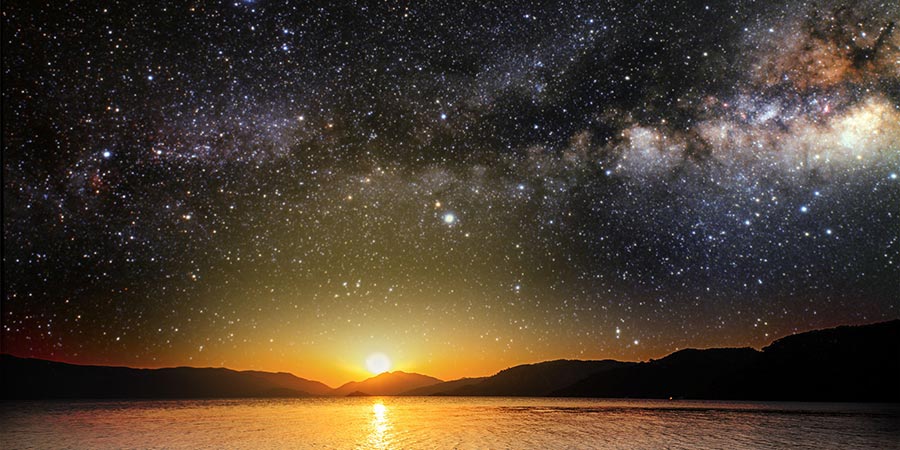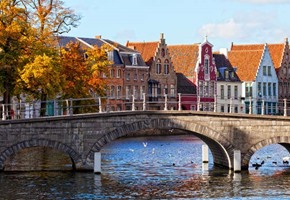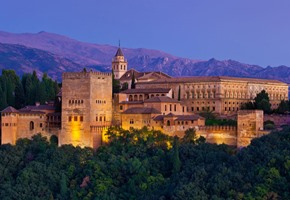The world is a weird place. It's not something we always appreciate as we go about our day-to-day lives, but every so often you learn something about this planet of ours, suspended in a potentially infinite cosmos, that makes you stop and pause for thought. It's humbling to be reminded how small we are in the grand scale of things once in a while, so for a quick dose of perspective, here are our top five strange and wonderful natural phenomena that occur around the globe.
1) The midnight sun. It might not seem possible as our nights get darker and darker ever earlier, but at the height of summer north of the Arctic Circle, the sun never sets. And it's not just around the summer solstice either, in Norway's sparsely populated Svalbard region, there is no sunset at any time between mid-April and early August. Conversely however (and unfortunately all to believably this time of year), as winter approaches residents are cast into the darkness of polar nights - where the sun stays resolutely below the horizon, giving out no more than a twilight glow around midday.
2) The Saltstraumen. Just ten miles off land, where the Saltenfjorden and Skjerstad Fjord converge, broods one of the most powerful tidal currents in the world. Known as the Saltstraumen maelstrom, this rip-roaringly formidable display sees over four hundred million cubic metres of water power its way through a narrow channel, at speeds reaching twenty-five miles per hour. It may sound intimidating, but that doesn't stop dare-devil sightseers. Boarding a boat in nearby Bodø, you can actually get up close and personal with this tumult of swirling sea water yourself, and fisherman brave getting even closer for a chance to catch some of the specialty coalfish that can be found in the vortex itself. If you head further north into the Lofoten archipelago, you can even find another of these phenomena, one with a fearsome reputation for sinking Captain Nemo's Nautilus. That isn't its only literary claim to fame either; Edgar Allan Poe was said to have been inspired to write 'A Decent into the Maelström' after seeing its effects for himself.
3) Sailing Stones. In the heat of the desert sun, where few people will catch them in the act, are the sailing stones of Death Valley, Nevada. A mystery to modern scientists until recent years, the sailing stones were so named as they appeared to drag themselves completely independently across the dried-out lake bed of Racetrack Playa, leaving tell-tail trails of churned-up mud behind them. Once blamed on everything from space aliens to the tug of the earth's magnetic field, it's now believed that winter weather in the empty gorge (which can bring about freezing conditions) are the less cryptic answer. Enough ice would form underneath the stones to allow the wind to gently blow them along the desolate surface - mystery solved!
4) Fire tornados. They might look like something straight out of a film about the end of days, but these apocalyptic manifestations are recognisable in areas of Australia and California as fire tornados (also known as fire devils, fire twisters and firenados). Whipped into existence by an unfortunate combination of wild fires and strong winds whose updrafts literally feed off the surrounding flames, they work themselves into a dangerous frenzy that can reach blistering temperatures of more than 1,000 degrees centigrade, and heights of up to 50 metres. They are capable of ripping trees from their roots and destroying large areas of scrubland, as well as any homes unlucky enough to find themselves in their path. The very worst of its kind formed in Japan after a devastating earthquake, it was the size of a city and 38,000 people lost their lives to its fearsome capabilities.
5) Sea of stars. Tucked away in the Indian Ocean is the tiny island of Vaadhoo, part of the Raa Atoll in the Maldives. A perfect combination of blue skies, azure seas and crisp white beaches during the day, by night things grow even more beautiful as the gentle waves that lap the shore bring with them a shimmering surprise. Microorganisms chemically react with the oxygen in the air around them, causing them to go through a process called, bioluminescence. In layman terms, they glow in the dark. Looking almost like a mirror image of the clear, star-filled skies high above, it's a magical scene to behold - all the more so because appearances cannot be predicted and seem to be beguilingly sporadic.
So, while living in Britain we may have to put up with some dank, wet and miserable weather - we can count our lucky stars (not a sea of them though, unfortunately) that more often than not, we don't have to deal with anything more extreme. Luckily for the adventurous out there however, many of these phenomena are no more than a plane ride away…you have been warned!





